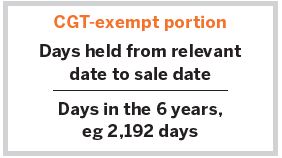Got tax queries regarding your property investments and wealth creation strategies? Our experts are on hand to answer them editor.yipmag@keymedia.com.au
Q. My wife purchased her home in August 2000. We met and got married, and she moved into a family home that I was living in rent-free in December 2005. She put in a tenant and her property was a rental until June 2017. It is now being sold.
We own no other property and have continued to live in our family home; however, we do pay all the bills, the owner’s rates and the land tax bill. Therefore, is her original home subject to CGT from 2005, or would she qualify for a partial exemption under the six-year rule?
I look forward to your reply. Cheers, Andrew
A. Special rules may apply, allowing individuals to extend the principal place of residence (PPOR) exemption.
Taxpayers who meet the ‘Home first used to produce income’ rule are considered to have acquired the property at market value at the time that it was first used to earn income (relevant date).
"No limit applies to the number of times that you can reoccupy and claim further six-year exemptions"
Capital gains tax under this rule is calculated on the gain from the relevant date
(at market value) to the sale date, and gains up to six years may be exempt.
If you hold the property for more than six years, the gain is prorated so that the exempt portion (if eligible) is capped at six years as follows:
In other words, you would need to calculate how many days you have held the property as of the sale date, divided by 2,192 days, to calculate your exemption period. But please note that if you reoccupy the property a further six-year exemption can be available. No limit applies to the number of times that you can reoccupy and claim further six-year exemptions.
However, remember that the anti-avoidance rules will be a factor if your only motive is the avoidance of CGT. The ATO will consider your reasons for vacating when looking to apply the anti-avoidance rules.
The ‘Home first used to produce income’ rule applies if:
• the property was rented after 20 August 1996
• the property was purchased on or after 20 September 1985
• you would have been entitled to a full exemption immediately before the property was rented (eg part of the property was not used to produce assessable income prior to being fully rented out and, at the time of the initial purchase you occupied the property as soon as practicable)
• you are not entitled to a full PP0R exemption (eg you rented the property for more than six years or you own an additional property and claim it as your PP0R)
Access to the ‘Home first used to produce income’ rule and PPOR exemption will be compromised if:
• the house occupies land in excess of 2ha, or
• the property has at any time been substantially renovated, or
• you did not occupy the home as soon as practicable after purchase, or
• you, your spouse or a dependent child has an additional PPOR, or
• the property was inherited.
• Special rules allow individuals to extend the PPOR exemption.
• Anti-avoidance rules may be a factor to consider.
• The six-year rule to avoid paying GST can be applied on a pro rata basis.
Janelle Bartlett
is a partner at
Chan & Naylor
Disclaimer: The advice contained in this article is for general information only and should not be taken as financial advice. Please make sure to speak to a qualified professional person before making any investment decision.

